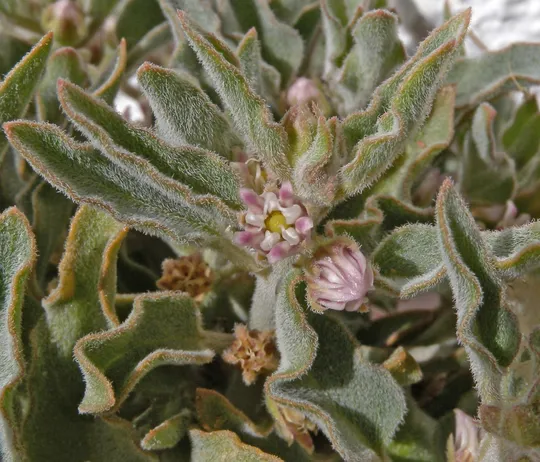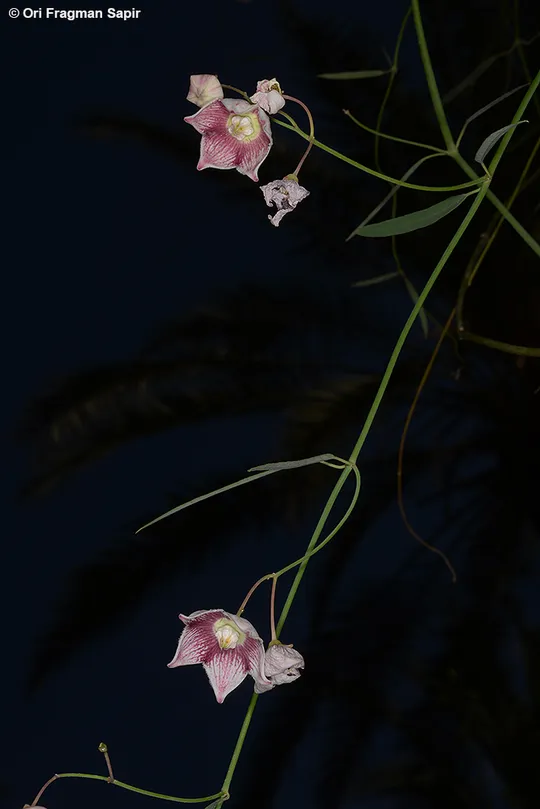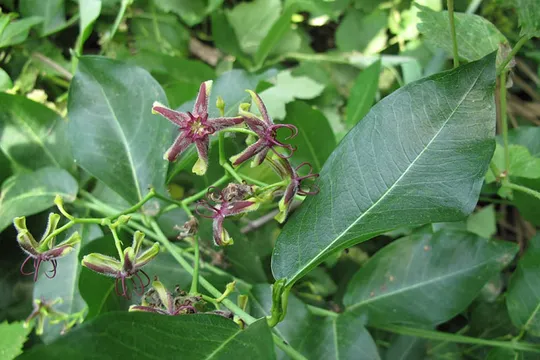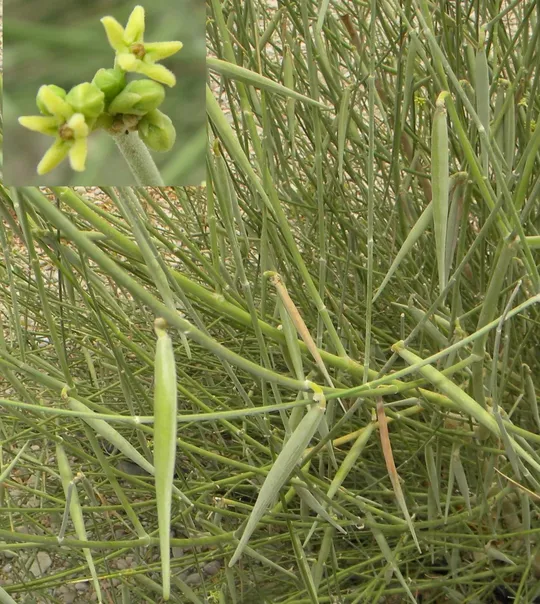Pentatropis nivalis
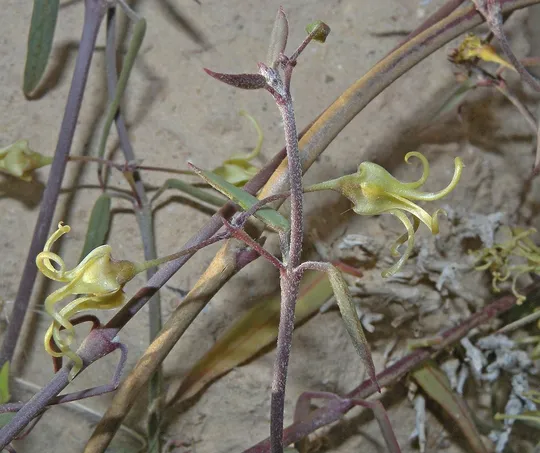
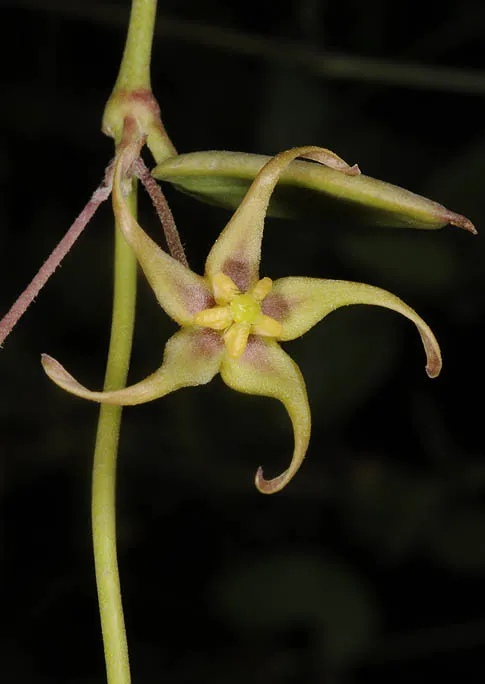
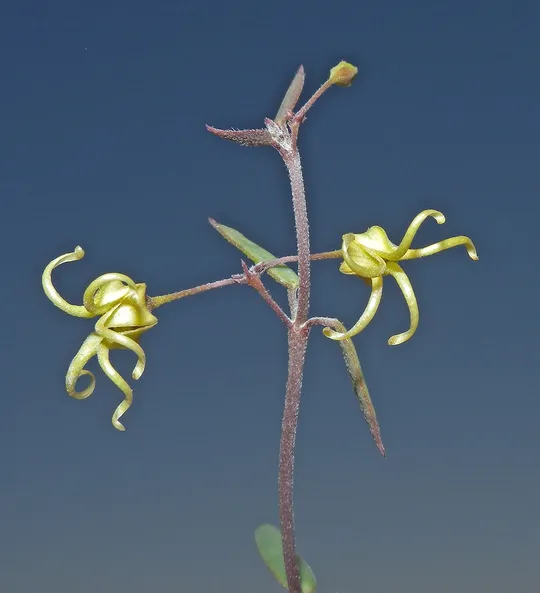
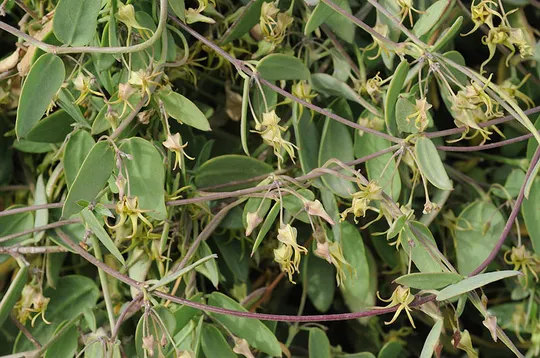
The young fruits of Pentatropis nivalis are eaten in
the Arabian Peninsula, particularly in the arid desert where they enrich the
variety of available food. In the rainy areas of southern Arabia, the fruits
are not eaten, as there are many other available plants for consumption (Miller
and Morris, 1988). Collecting P. nivalis fruit is not simple because
they are often hidden among the thorny acacia branches on which P. nivalis
climbs (Miller and Morris, 1988).
Pentatropis nivalis grows in three
regions in Israel: the Judean Desert, the Arava and the southern Negev, and has
been observed or collected from 10 sites in the country, although there is
concern that it has survived in only five. In the Judean Desert, it is found in
Wadi Hemar and in the Amiaz Plain and has disappeared from Wadi Zohar and from Wadi
Peres. In the Arava it is located in several sites in the Hatseva-Wadi Gidron and
Wadi Idan area. The species is no longer found in the En Tamar-Ne'ot HaKikar area
where it was recorded several times between 1930 and 1970. Mimi Ron found it in
Wadi Paran in the southern Negev in 1990. It is extinct in the Dead Sea region,
from where it had been previously collected in En Gedi and in Sodom.
Hot desert wadis,
on Acacia and Tamarix trees. Occasionally also in moist salt
marshes and in oases.
The
genus Pentatropis is a small genus, with six species, found in warm
areas of Africa, Asia and even Australia. It belongs to the Asclepiadaceae
family, which is now included in the Apocynaceae family. All of the species in
the genus are climbing herbaceous perennials, with characteristic weather
vane-like flowers.
·
The number of
regions in which Pentatropis
nivalis grows has decreased from four to three, and even in the
regions in which it still grows the number of sites is dwindling and the plant
has become extinct in some of them.
·
P. nivalis does not form large
populations and often appears as individual plants at each site.
·
The drying-up of
large wadis and changes in the water regimes in salt marshes and oases, are
probably the major reason for the decrease in the number of sites and threaten
the plants that grow on the remaining sites.
·
P. nivalis is part of a
successful rehabilitation program of Sudanian shrubs and plants through
gardening in the Dead Sea region, which has been ongoing for 15 years (Belcher,
2010).
·
The sites in Wadi
Hemar and the Amiaz Plain are located within the boundaries of the Judean
Desert Nature Reserve. The sites in the Hatseva area are protected in the Wadi Shezaf Reserve.
·
P. nivalis has a broad global distribution and apparently is not
globally endangered.
Pentatropis
nivalis should be naturalized in gardens in the area of the southern
Dead Sea and northern Arava.
Pentatropis nivalis grows in dry savannas in East Africa –
in Kenya, Ethiopia and Somalia. Its range extends to the coast of Arabia and
eastwards to India, Pakistan and Afghanistan. It is also known from Madagascar
and the Comoros Islands. The Dead Sea area is the northern limit of its
distribution.
Pentatropis
nivalis is a perennial vine of warm wadis,
oases and salt marshes in the southern regions in Israel. It is a rare plant
located in a small number of sites in Israel whose numbers are gradually
decreasing. The drying trend of its habitats in recent decades is the major
threat to the plant. It is not globally endangered.
בלכר מ. 2010. המשימה: השבת עצי עין גדי, בשביל הארץ, 36: 26-29.
Miller, A.G. and M. Morris, 1988. Plants of Dhofar. Office of the Adviser for Conservation of the Environment. Oman
Current Occupancy Map
| 1000 squre meter pixel | 5000 squre meter pixel | 10000 squre meter pixel | |
|---|---|---|---|
| number of observations | 0 | 0 | 0 |
| in total pixels | 0 | 0 | 0 |
| Family | Asclepiadaceae |
| Classification | On the near threatened species list |
| Ecosystem | Desert |
| Chorotype | Sudanian |
| Conservation Site | Wadi Gidron, Wadi Idan |
| Rarity |
1
2
6
|
|---|---|
| Vulnerability |
0
2
4
|
| Attractiveness |
0
0
4
|
| Endemism |
0
0
4
|
| Red number |
1
2.6
10
|
| Peripherality | S |
| IUCN category | DD EW EX LC CR EN VU NT |
| Threat Definition according to the red book | Near threatened |
 Based on:
Based on:
